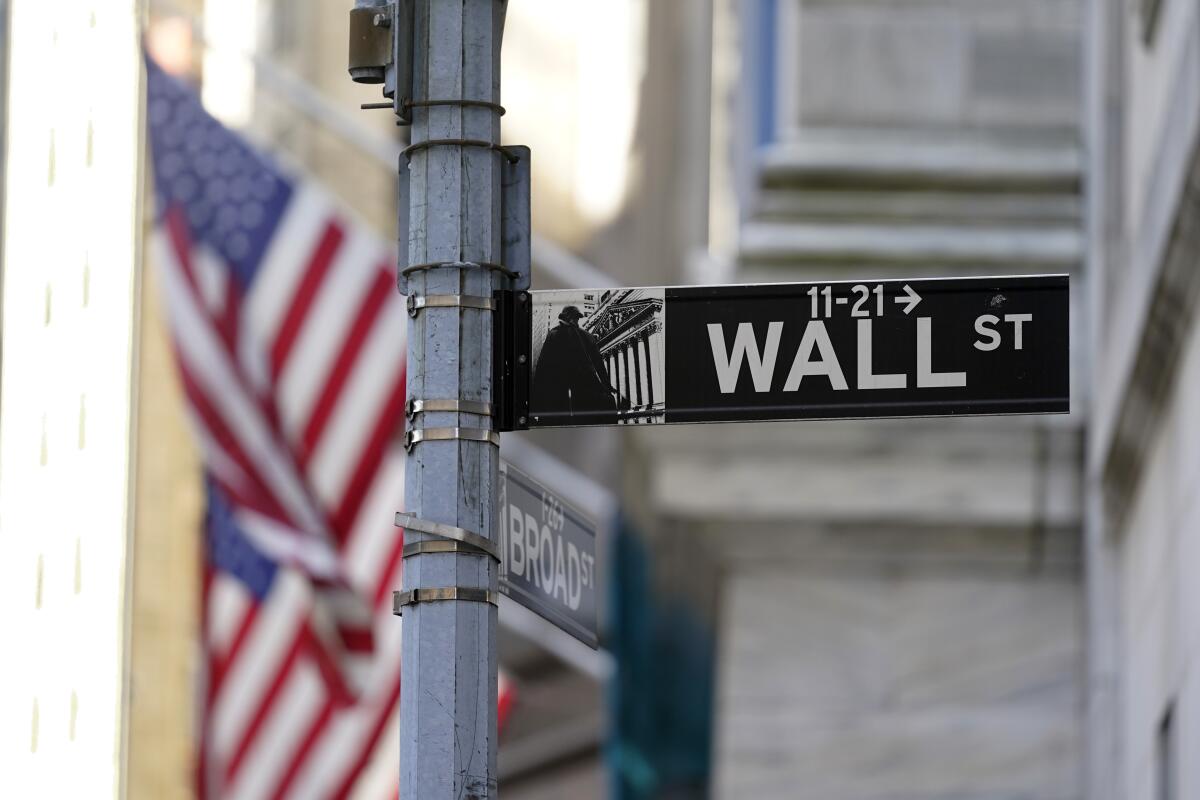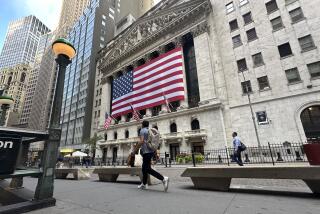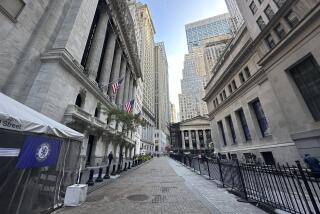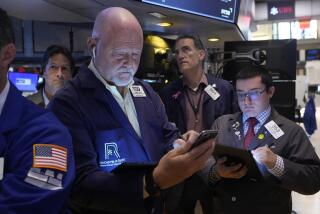Stocks rise, pushing S&P 500 back near record high

NEW YORK â Stocks on Wall Street rose Tuesday, nudging the Standard & Poorâs 500 index toward the record high it reached last week, as the head of the Federal Reserve said again that inflation looks to be only a temporary problem for the economy and markets.
The S&P 500 climbed 21.65 points, or 0.5%, to 4,246.44 after Fed Chair Jerome H. Powellâs comments helped further calm markets, which were jolted by last weekâs announcement that the Fed has begun planning to eventually offer less support to the economy. The S&P 500 got back to within 0.2% of its all-time high set two Mondays ago, after dropping as much as 2.1%.
The Dow Jones industrial average rose 68.61 points, or 0.2%, to 33,945.58, and the Nasdaq composite climbed 111.79 points, or 0.8%, to 14,253.27.
Indexes started the day mixed, but they rose more convincingly as Powell told a congressional subcommittee that the burst of inflation hitting the economy is mostly confined to areas hemmed in by shortages of supplies. Thatâs why he expects inflation, which hit 5% last month, to subside as the economy gets further into its reawakening.
He pointed in particular to rising prices for used cars, airfares and other things where a newfound flood of dollars is chasing after a limited supply of goods and services. He acknowledged that price gains in those areas have been larger than the Fed initially expected, but he remained resolute in calling them only temporary.
âThe incoming data are very much consistent with the view that these are factors that will wane over time,â he said.
If the Fed is wrong, and if inflation does end up being a longer-lasting problem, it would push the central bank to get more aggressive about raising interest rates higher and faster off their record lows.
Markets are just getting used to the idea of the Fed making any moves at all. For more than a year, theyâve enjoyed investing on easy mode as super-low rates propped up prices. Last week, though, the Fed indicated it may begin raising short-term rates by late 2023, earlier than expected. It also discussed easing up on programs meant to keep longer-term rates low.
A turbocharged economy and rising wages are adding to pricing pressures. Some warn of a dangerous inflationary psychology.
Trading is likely to get bumpier through the summer as economic reports may give sometimes conflicting signals about inflation and other key data amid a recovering economy, said Katie Nixon, chief investment officer at Northern Trust Wealth Management.
âWhat investors are going to have to do is just buckle up,â she said. âThe data is going to be very noisy; we could get some numbers that create some anxiety.â
The key, she said, is to stay calm and not overreact to any one signal or piece of data.
Markets are sitting close to their records, but that has masked plenty of churning happening underneath the surface since the Fedâs announcement last week.
The marketâs initial move was to send stocks lower and bond yields higher. But the reaction has diffused as investors focus more on the Fedâs saying it still plans to keep up its support for markets for a while.
Longer-term Treasury yields have fallen back after their initial spike, for example. The 10-year yield slipped to 1.46% from Mondayâs 1.48%.
Shorter-term yields, which move more on expectations for Fed moves on the federal funds rate, have also regressed a bit. The two-year Treasury yield fell to 0.22% from Mondayâs 0.27%, but itâs still well above its 0.16% level from before the Fedâs meeting.
In the stock market, companies whose profits most need a strengthening economy to flourish have swung out of and back into favor. Theyâve been trading places with big tech stocks and other firms that have thrived during the pandemic and have seemed able to grow almost regardless of the economy.
GameStop shares rose 10% on Tuesday after the company said it had raised $1.1 billion after selling 5 million new shares to investors. The company captivated Wall Street this year after a band of smaller-pocketed investors piled into it together and sent its price way above what professional analysts said was reasonable.
Retailers and tech firms were also particularly strong. Apple, Amazon and Microsoft all rose at least 1.1% â the biggest reasons for the S&P 500âs climb.
Cryptocurrency prices continued to swing sharply after Chinese banks said they would step up enforcement of a government ban.
Bitcoin was trading at a little less than $33,000, according to Coindesk. Earlier in the day, it fell below $30,000, about where it started the year, after more than halving from its high of $64,829.14 in April.
More to Read
Inside the business of entertainment
The Wide Shot brings you news, analysis and insights on everything from streaming wars to production â and what it all means for the future.
You may occasionally receive promotional content from the Los Angeles Times.











